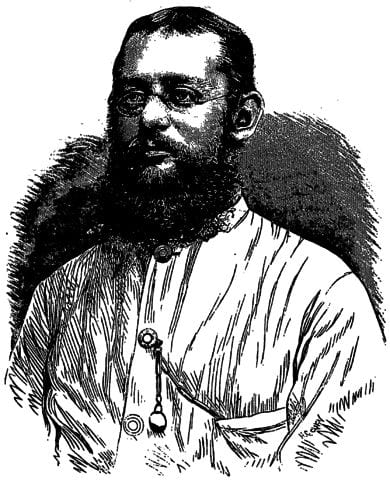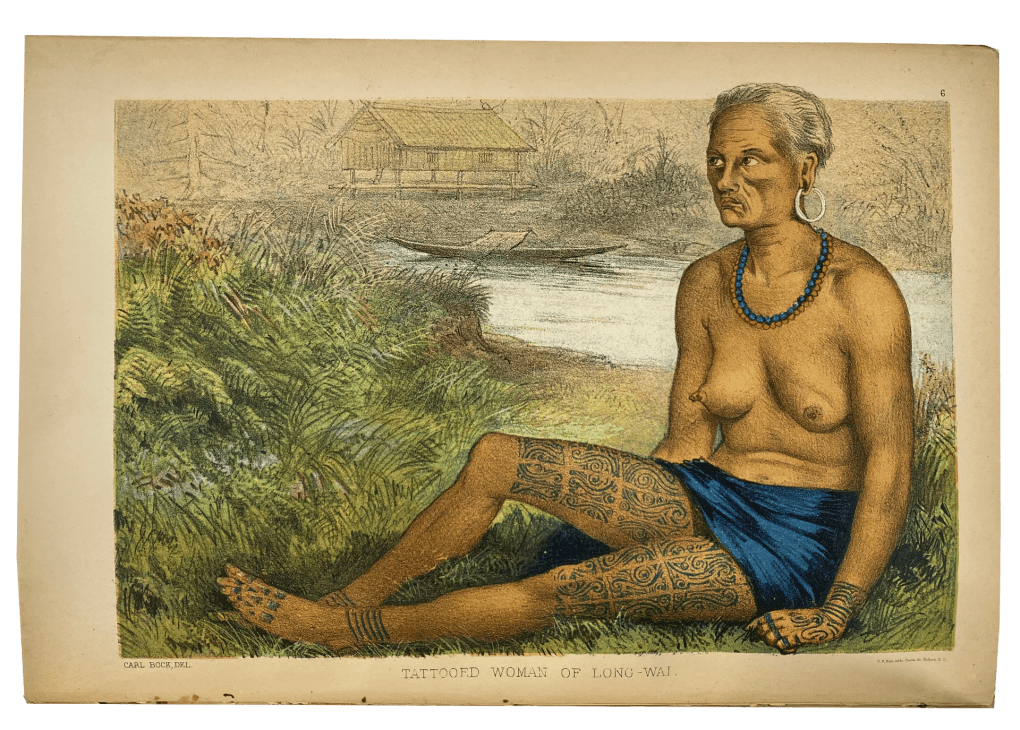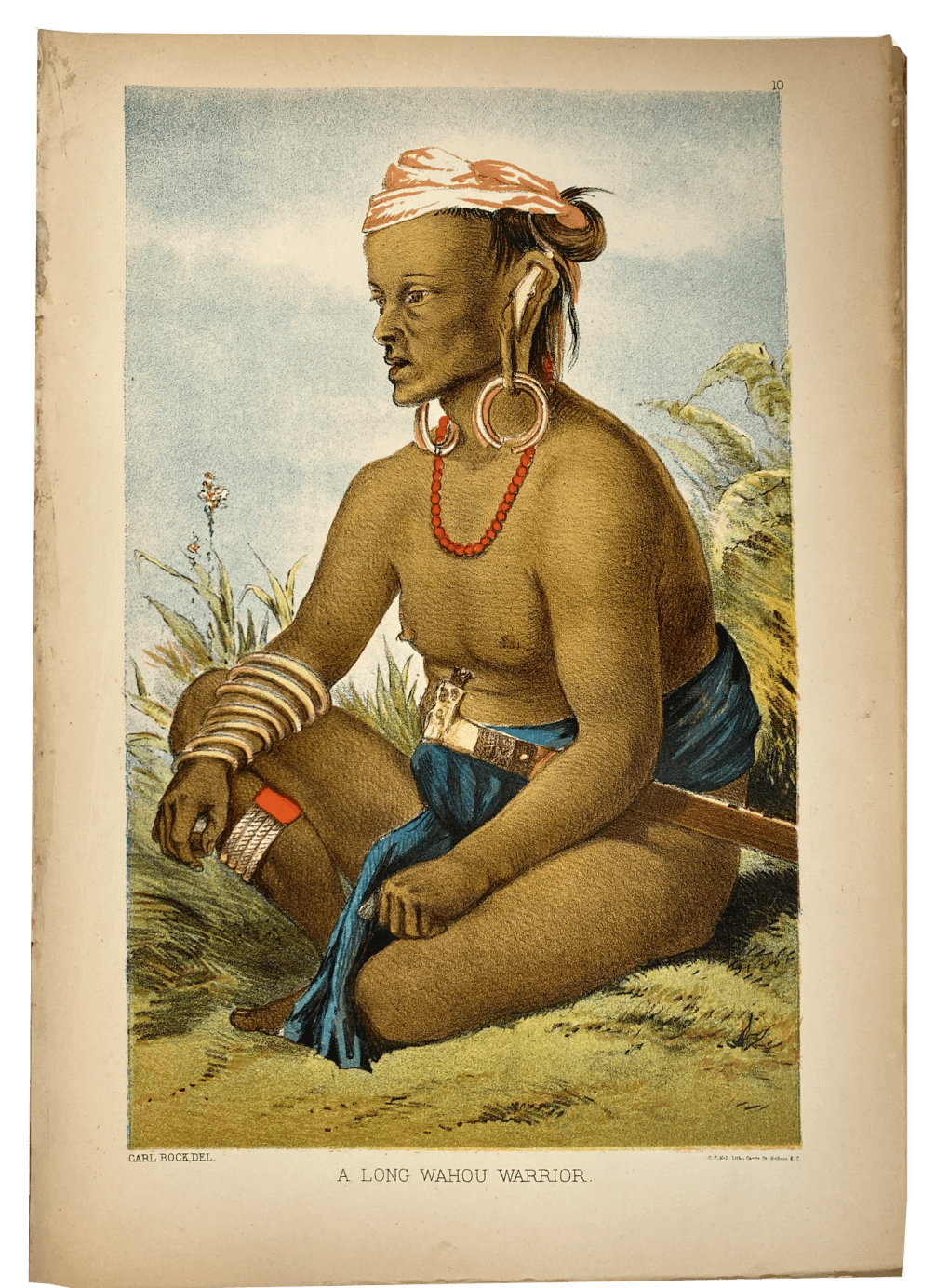Hello from NUS Libraries,

Naturalist and explorer Carl Alfred Bock (1849 – 1932). Image by Hans Christian Olsen – Verdens Gang, No. 145, December 9, 1882., Public Domain
This blog article is a follow-up to the previous one which provides an overview of Early Voyages and Travels in Southeast Asia, a new exhibition on rare books at the NUS Central Library. In this article, I will uncover The Head-hunters of Borneo: A Narrative Of Travel Up The Mahakkam And Down The Barito; Also, Journeyings In Sumatra, one of the many rare books on display.
Published in 1881, the travel book was authored by Norwegian naturalist and explorer Carl Alfred Bock (1849 – 1932). In the late 1870s, he was commissioned by his Excellency Van Lansberge, Governor-General of the Dutch Indies to travel to Borneo to study the little-known indigenous population and its fauna. Bock lived to tell his tale about the exploration of the jungles in Borneo, encounters with several dangerous and troublesome Dyak tribes, descriptions of cannibalism, and so forth. Bock submitted the official report of his journey and observations which was translated into Dutch. Eager to capitalise on his achievements, he re-published his travel accounts upon his return to London. Titled The Head-hunters of Borneo, the second edition of the book was littered with anecdotal details and appended lists of his collected specimens.
This volume features rather lavish colour plates, maps, and fascinating illustrations. Did you know that all the drawings were done carefully on the spot and are the main highlight of the publication? It’s rather telling that the author was quite a clever artist and used his skills to his advantage. For example, the artistic renderings of native artefacts, houses, villages and numerous portraits of the Dyaks have not only given readers a better idea of the traditional clothing and dwellings of these tribes but fuelled their imagination with a particular impression of Borneo.

Bock wrote about his visit to Long Wai, the capital town of the most powerful Dyak tribe Koetei. There he had an encounter with several men who belonged to a different tribe. The men had somewhat fairer skin than other Dyaks. Their features were different and a slight coarseness in the hair gave them some resemblance to the “Mongolian type”. Known as, “Orang Poonan” or Forest People – they were part of a community-dwelling in the forest and preferred being in the open air.
The men’s “headdresses and tjawat or waist-cloth were made of a brown material made of bark and resembled tappa”. Bock was extremely curious about the Poonan women and discovered that they are known as white or (poeti). After multiple attempts, he managed to coax a chief to accompany him to Long Wai and observed that the women were naked save for a “narrow cloth around their loins”. On persuasion, the women allowed him to sketch them and did not hesitate to ask for a necklace and tobacco in return.

One of the few things that caught my eye is the prominent illustrations featuring women from various Dyak communities. Bock noted that the back of their hands were decorated elaborately and artistically with tattoo marks, in symmetrical patterns – an indication that the women were married. He then stated that the married women were also tattooed on the feet as well as the thighs at times. The Dyaks communities living in the Mahakkam area, East Kalimantan are known to have rich traditions and cultures which are still a big part of their lives. According to their culture, women have certain beliefs to beautify themselves.
For instance, ear lobes were elongated at varying lengths by wearing weight earrings made of brass, gold, iron, tin, or silver. Bock pointed out that the earlobe piercing process began during infancy and was practiced by both men and women. Commonly known as “telinga aruuk” [elongated earlobes] among the Dyak communities and “telinga panjang” in Malay, it also symbolised tribal origins, bravery, and status. Nowadays, this tradition of lengthening one’s ears is considered outdated. It tells us that even this ancestral tradition is being eroded as modernisation and globalisation have begun to permeate the lives of these tribal communities.

Illustration depicting a Long Wahou warrior
Bock received favourable reviews for his work. Many readers were fascinated by the anecdotal details and life-like sketches. In the 1985 reprint, Professor Robert H. W. Reece, an Associate Professor of History at Murdoch University wrote the introductory chapter. He described Bock as a “shrewd observer with a nice sense of humour”. Over the years and the hype, this version of the publication was translated into several languages from German to Norwegian to Swedish. If you enjoy Bock’s sensational style of writing, you will be happy to learn that he also authored a book based on his exploration of northern Thailand (Siam then) and Laos during the reign of King Chulalongkorn (Rama V) in 1881. For now, I hope this article entices you to borrow the book from the NUS Libraries. #NUS Special Collections
Cheers,
Poonam
Image Source: Bock, Carl. 1882. The Head-Hunters of Borneo: a Narrative of Travel up the Mahakkam and down the Barito ; Also, Journeyings in Sumatra. 2nd ed. London: Sampson Low, Marston, Searle & Rivington.

